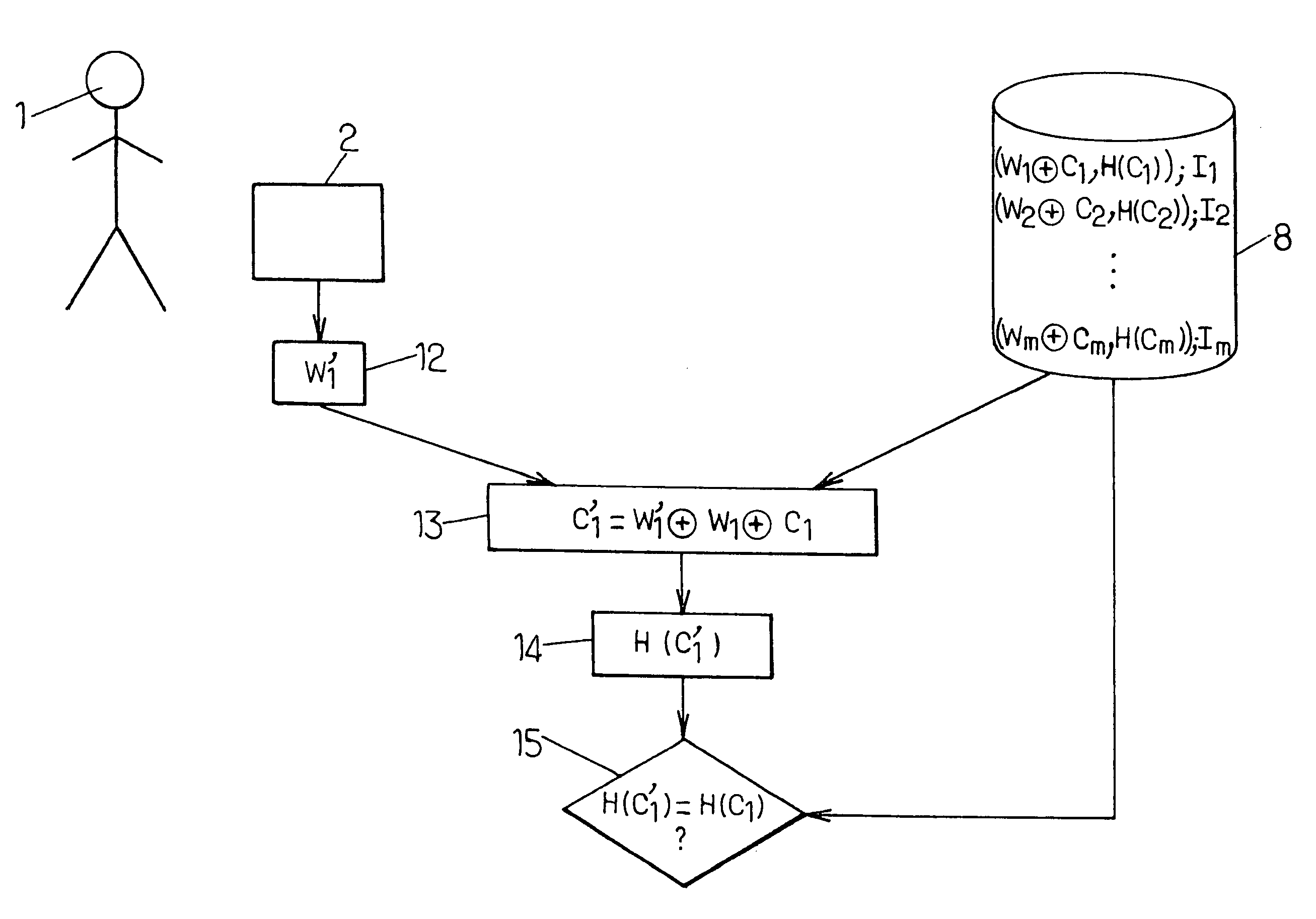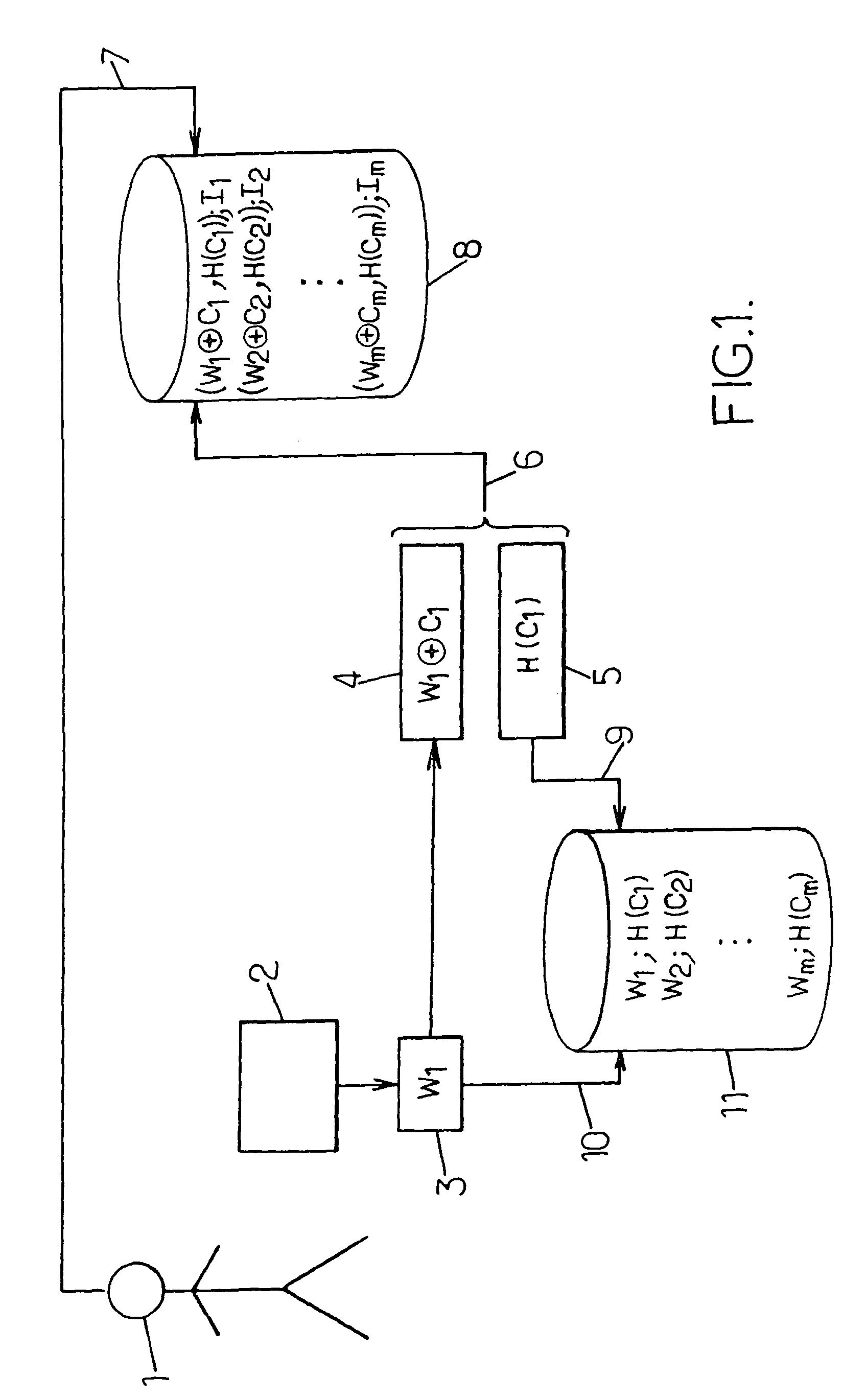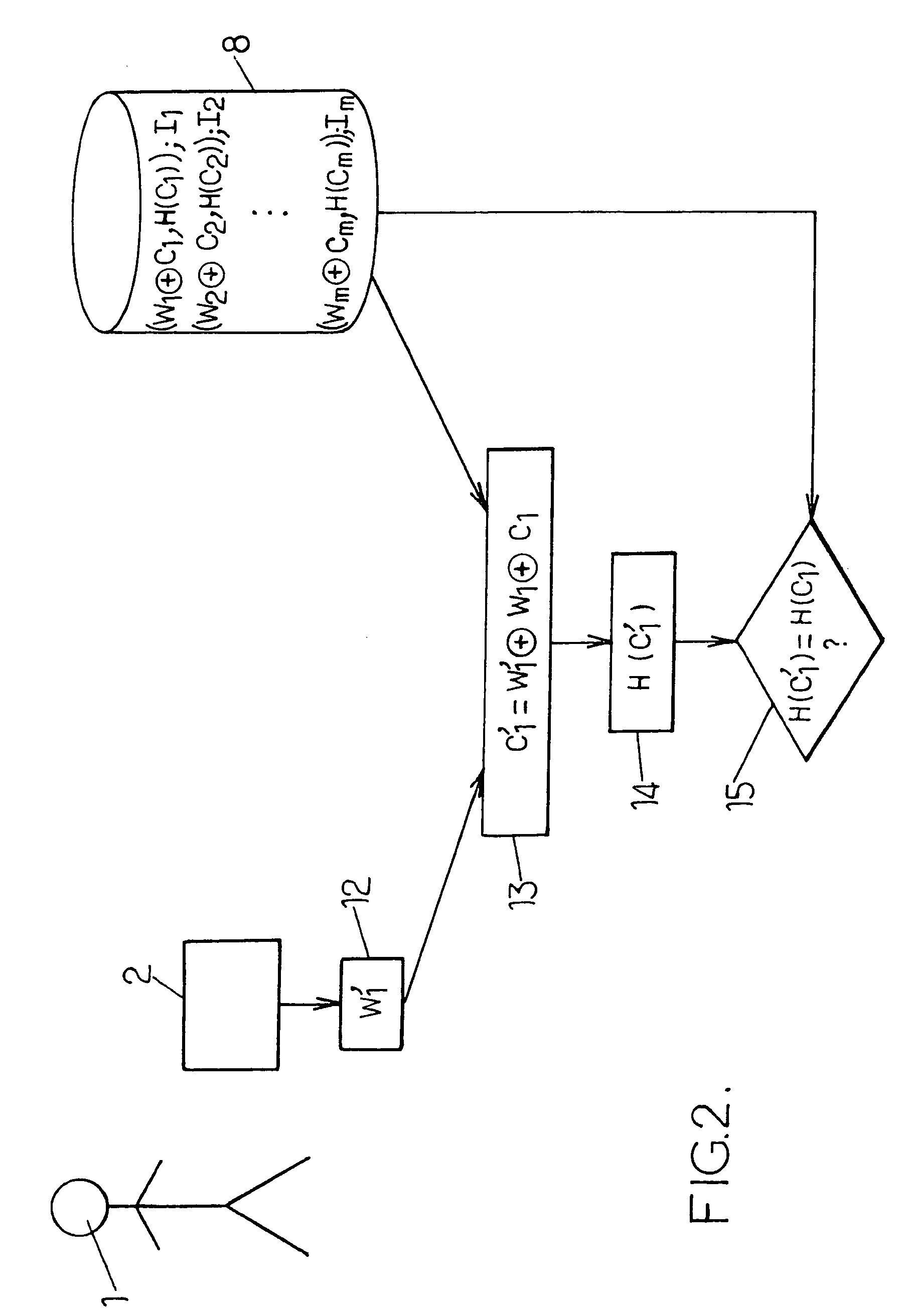Methods of identifier determination and of biometric verification and associated systems
a biometric verification and identification method technology, applied in the field of biometric data, can solve the problems of not being able to find the code word, and being practically impossible to do so, and achieve the effect of great simplicity in implementation
- Summary
- Abstract
- Description
- Claims
- Application Information
AI Technical Summary
Benefits of technology
Problems solved by technology
Method used
Image
Examples
Embodiment Construction
[0050]FIG. 1 shows an individual 1 for whom it is desired to determine an identifier of determined discriminating power, during a stage referred as an “enrollment” stage. This discriminating power may be selected, for example, so as to comply with a level of discrimination required by an application implementing biometric verification. The identifier as determined in this way can then be used during biometric verification, by providing a guarantee that the requirements of the application in terms of discrimination are satisfied.
[0051]The identifier is determined as follows.
[0052]Biometric data is initially obtained for the individual 1. This biometric data may be of various different types. Preferably, it presents relatively high discriminating power. Discriminating power is sometimes characterized by a “false acceptance” rate that corresponds to the probability of confusing any two people on analyzing their biometric data. The biometric data obtained in the present example is thus ...
PUM
 Login to View More
Login to View More Abstract
Description
Claims
Application Information
 Login to View More
Login to View More - R&D
- Intellectual Property
- Life Sciences
- Materials
- Tech Scout
- Unparalleled Data Quality
- Higher Quality Content
- 60% Fewer Hallucinations
Browse by: Latest US Patents, China's latest patents, Technical Efficacy Thesaurus, Application Domain, Technology Topic, Popular Technical Reports.
© 2025 PatSnap. All rights reserved.Legal|Privacy policy|Modern Slavery Act Transparency Statement|Sitemap|About US| Contact US: help@patsnap.com



